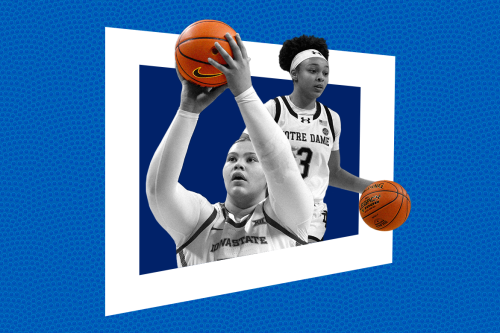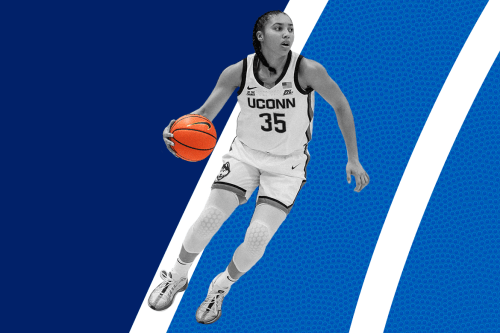Running and I Had a Toxic Relationship for Years, Until Run Clubs Healed It
Read one runner's story of how finding community through running clubs changed her relationship to the sport.

I used to throw up before every race I ran. Tears would gush down my cheeks as I winced around corners, limped across the finish, and hyperventilated while waiting for results. This was 10 years ago.
Today, I run up and down the West Side Highway with former strangers who have become my closest friends, singing along to our favorite throwbacks, dishing gossip, dancing, and befriending the newest members of our ever-growing community (one that I’ve given a moniker: “my zoomy family”).
But this isn’t another in a long list of “running changed my life” essays. Actually, for many years, running served as the catalyst for countless sleepless nights, hospital visits for my muscular and mental health, and too many missed meals.
For years, I said I’d never call myself a “runner” ever again. And then I found a community that completely transformed my approach to the sport.
Where my toxic relationship with running began
I started running high school track at 16 to cross-train for tennis during the off season. Instead, I found myself a better accidental sprinter than I ever was a doubles player. Unfortunately, the problem with being good at something is that then, greatness is expected of you…often by you.
For the next two years, desperation to be the best took over my mental illness-riddled brain
My depression caused a constant internal monologue of negative self-talk that brought on orthorexic tendencies of overexercising, under-eating, and inconsolable scream-crying into my pillow the night before every race; a detrimental trifecta that left me feeling sore, tired, and weak. Anxiety made my heart race, tied my stomach in knots, and made me hyperventilate. And my then-undiagnosed Bipolar 2 had me vacillating between extremes, convincing myself to muscle through the pain—quitting would be weak. I just had to work harder and get stronger, faster, better.
I continued to run on injured legs until my doctor threatened to literally cut part of my fascia to solve my self-induced exertional compartment syndrome. That was my final straw. Surgery wasn’t worth it. I stopped racing.
How my relationship with running changed
In my early twenties, I only ran every once in a while when things felt out of control—changing majors, friend breakups, boy troubles, difficult work environments, a global pandemic. I wouldn’t run for months and then a switch would flip and I’d go every day; some days twice. I would watch my body change, grow proud of myself, then, feeling like I had regained “control,” I would stop. I was by no means a “runner” anymore, but the act of running served its purpose when I needed it.
Gold Medal Couple Tara Davis-Woodhall and Hunter Woodhall Talk Marriage, Motivation, and Their Next Chapter With Nike
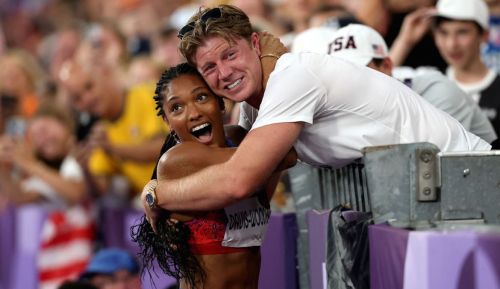
Coach Kara Lawson Wants You to ‘Handle Hard Better’—and Here Are 3 Ways to Do Just That
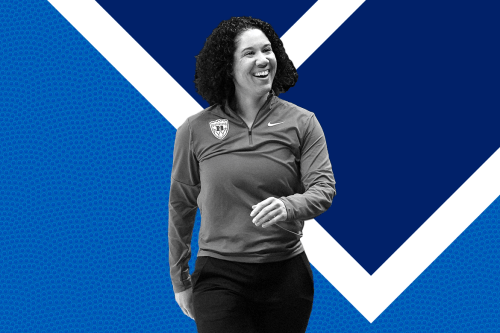
JuJu Watkins Leaves March Madness With ACL Tear—and This Knee Injury Is More Common Than You Think
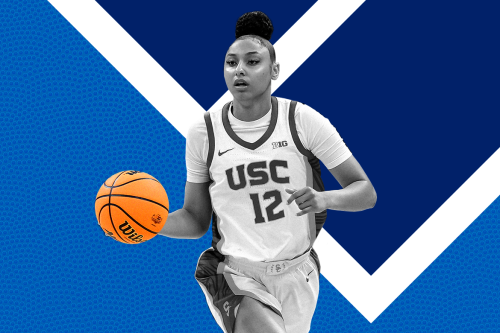
Last year when my dad had a heart attack, I jogged to the hospital. Filled with nervous energy and feeling helpless, it gave me some time to process my emotions before seeing him and the rest of my family. But instead of it being a temporary salve, this time it was a turning point. I decided I would continue jogging regularly to hold it all together.
Joining a run club
Cut to one month later. Having spent the previous year working to build a generative AI startup, I was desperate for community and hesitantly joined Pitch and Run, a run club of entrepreneurs. The morning before my first (and second and third) run, I woke my dad with a 6 a.m. phone call, feeling the same ball of nerves that I did at 16. What if I can’t do it? They’re all “runners.” I’m going to embarrass myself.
An hour in, I realized this was very different from the type of running I was used to. This was not a “do or die” track meet, but an approachable, immediately-inviting community on the run. There were no expectations of “greatness” that had weighed on me in high school. The only expectation is that you show up.
Later that month, I found myself on TikTok and came across a video of Tyler Swartz, founder of Endorphins running group, running to all of the New York City airports in a day. Fueled by Cheez-Its and “vibes,” he made running look fun—something I didn’t think it could be. Loving his boundless energy and “come one, come all, come as you are” spirit, I joined the club.
Going to my first Endorphins run alone, I was immediately welcomed into the huddle with sweaty hugs and smiling faces at 7:15 a.m. I soon learned that other people who want to wake up early and run together are my kind of people. Over the course of the five-mile route, the group of 50 or so runners naturally split into pace groups without comment. No one was there to judge anyone’s speed before their morning coffee. Everyone just wanted to run for the sake of running. To take selfies, make friends, and chat while getting in some morning movement.
This was the beginning of the end of my seeing running as a source of anxiety, a means to a Size 2 end, or a last-ditch attempt to quash a depressive or manic episode in its tracks. Whether or not I knew their names at the time, these soon-to-be friends put that mental gremlin to bed. Running was allowed to be fun.
“Every time I set out for a run, I [used to think] I had to go at an all-out effort and despised the way that made me feel,” Sammy Attia, a fellow Endorphins runner and captain of Midnight Runners later told me when I shared my own similar experience. “Joining run clubs has completely shifted that mindset. I now run because it makes me feel good. I run to make friends. I chit-chat and I dance and I go at whatever pace I feel like going at and of course I meet so many cool people along the way,”
From “Strava friends” who excitedly give you kudos to group chats that go far past sharing your goals and favorite electrolyte powders, I’ve found that run clubs like Endorphins redefine what it means to find IRL community in a digital age. “This is the community I’ve been searching for,” says Bailey Williams, a former dancer who began running last year. “You do fun, crazy things. You can be competitive or you can just run to get ice cream together.”
Just as quickly as I found my tribe, though, I thought I’d lost it. For the past three months I’ve warmed the metaphorical “bench,” battling hip and back injuries. I feared that not being able to run with my friends would put an end to my newfound social life. This hasn’t been the case. Though I haven’t laced up for morning runs, I’ve hosted “Zoomy” dinner parties and gone to mini golf outings and picnics with my Endorphins friends. I’ve cheered team members on at races, and every Monday and Saturday morning, I walk my dog to see my Endorphins family before they set off.
Because this community cares so deeply about healthy running, the team has been there for me with constant reminders to take it easy, especially when that’s the last thing I want to do. They’ve checked in on how physical therapy is going, and some have become “recovery buddies” to bike, cold plunge, and go to yoga with me as we heal together. “Going through an injury cycle was so much more bearable because I had my network of people,” says Shannon Hale, who moved to New York City last month and has already found community through run clubs.
Today, I finally call myself a “runner” again without wincing at the word. I can’t claim that running or run clubs cured any of the medley of mental maladies that I deal with daily. But I can say that joining Endorphins, Pitch and Run, as well as Dirty Bird Run Club and other running clubs has been the defining factor that healed my decade-long unhealthy relationship with the sport, and allowed for it to rebrand from a stressor to a stress relief. For that, for these clubs, these people, and these lifelong communities, I will be forever grateful.
Sign Up for Our Daily Newsletter
Get all the latest in wellness, trends, food, fitness, beauty, and more delivered right to your inbox.
Got it, you've been added to our email list.

